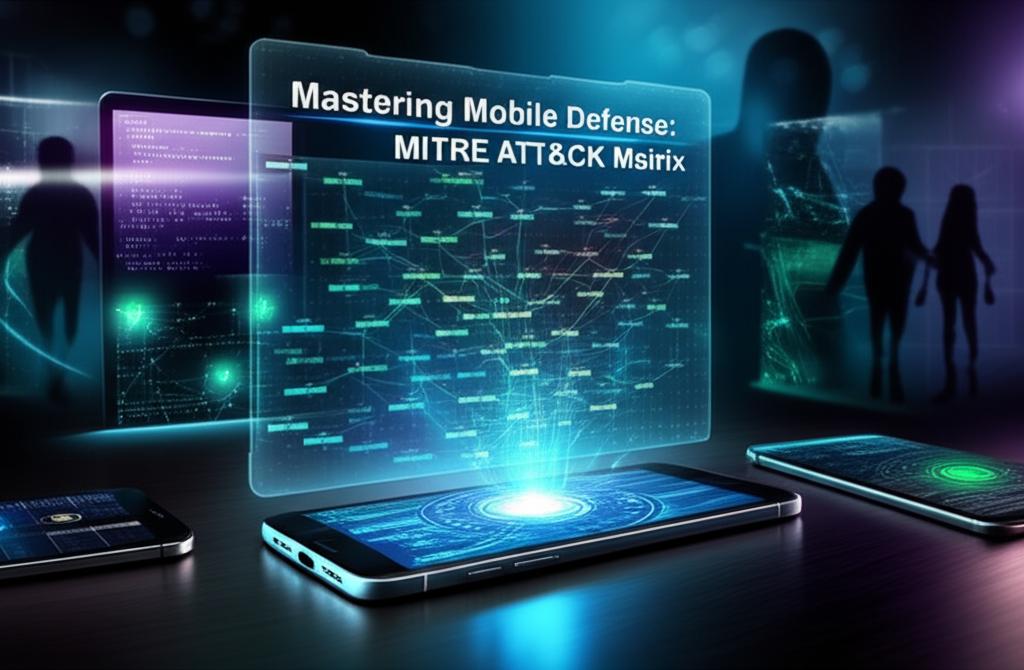Mastering Mobile Defense: A Deep Dive into the MITRE ATT&CK Matrix for Mobile
In the rapidly evolving landscape of cybersecurity, mobile devices have become prime targets for sophisticated attackers. As organizations and individuals rely more heavily on smartphones and tablets for critical operations, understanding and defending against mobile threats is paramount. This is where the MITRE ATT&CK Matrix for Mobile emerges as an indispensable tool, offering a comprehensive knowledge base of adversary tactics and techniques against mobile platforms.
What is the MITRE ATT&CK Matrix for Mobile?
The MITRE ATT&CK (Adversarial Tactics, Techniques, and Common Knowledge) framework is a globally accessible, living knowledge base of adversary tactics and techniques based on real-world observations. The MITRE ATT&CK Matrix for Mobile specifically adapts this framework to enumerate the specific behaviors that attackers use to compromise and operate within mobile environments. It organizes these behaviors into a matrix, allowing security professionals to systematically understand, detect, and mitigate threats.
Unlike traditional attack frameworks that might focus solely on network or endpoint security, the MITRE ATT&CK Matrix for Mobile addresses the unique challenges and attack surfaces presented by mobile operating systems like Android and iOS. It details how adversaries gain initial access, execute code, persist, elevate privileges, evade defenses, access credentials, discover system information, exfiltrate data, and impact device functionality.
Understanding the Core: Tactics and Techniques
The matrix is structured around two primary components:
- Tactics: These represent the ‘why’ of an adversary’s action – the high-level goals they are trying to achieve (e.g., Initial Access, Execution, Persistence, Credential Access, Exfiltration).
- Techniques: These represent the ‘how’ – the specific methods adversaries use to achieve their tactical goals (e.g., Drive-by Compromise for Initial Access, Exploitation of Remote Services for Execution, etc.). Each technique often has sub-techniques for even greater specificity.
The MITRE ATT&CK Matrix for Mobile provides detailed descriptions for each technique, including examples of its use by known threat groups, detection recommendations, and mitigation strategies. This level of detail is crucial for developing robust mobile security defenses.
Why is the MITRE ATT&CK Matrix for Mobile Indispensable?
The adoption of the MITRE ATT&CK Matrix for Mobile offers numerous benefits for security teams:
Enhanced Threat Visibility
It provides a standardized, granular view of mobile adversary behaviors, helping organizations to understand the full spectrum of potential threats targeting their mobile assets. This clarity allows for more informed decision-making regarding security investments and priorities.
Standardized Language
The framework offers a common language for discussing mobile threats, facilitating better communication among security teams, leadership, and external partners. This reduces ambiguity and improves collaborative defense efforts.
Improved Defensive Strategies
By mapping security controls and detection capabilities against specific techniques, organizations can identify gaps in their mobile defense posture. This enables them to prioritize the implementation of new controls, improve existing ones, and develop more effective detection rules.
Key Mobile Platforms Covered
The MITRE ATT&CK Matrix for Mobile distinguishes between techniques applicable to different mobile operating systems, primarily:
- Android: Covers techniques specific to the Android ecosystem, including sideloading apps, exploiting Android permissions, or abusing accessibility services.
- iOS: Addresses techniques relevant to Apple’s iOS platform, such as abusing enterprise signing, exploiting Safari vulnerabilities, or tampering with keychain data.
This platform-specific breakdown is vital as the security architectures and attack surfaces of Android and iOS differ significantly.
How Organizations Leverage the Matrix
Security teams utilize the MITRE ATT&CK Matrix for Mobile in various ways:
Threat Modeling and Risk Assessment
By using the matrix to enumerate potential attack paths, organizations can better understand their exposure to mobile threats and prioritize risks based on their specific mobile app portfolio and user base.
Red Teaming and Adversary Emulation
Red teams use the matrix to simulate realistic mobile attacks, testing the effectiveness of an organization’s mobile security controls and detection capabilities against known adversary techniques.
Blue Teaming and Security Operations
Blue teams leverage the matrix to develop and refine their detection and response strategies. They can map their existing security tools to techniques in the matrix to identify coverage gaps and improve threat intelligence analysis.
The Future of Mobile Security with MITRE ATT&CK
As mobile technology continues to advance and threat actors become more sophisticated, the MITRE ATT&CK Matrix for Mobile will remain a cornerstone for effective mobile cybersecurity. Its ongoing updates ensure that it reflects the latest adversary behaviors, making it an essential, dynamic resource for anyone involved in protecting mobile devices and data.
Conclusion
The MITRE ATT&CK Matrix for Mobile is more than just a list of threats; it’s a strategic framework that empowers organizations to elevate their mobile security posture from reactive to proactive. By deeply understanding the adversary, security professionals can build more resilient defenses, anticipate attacks, and ultimately, safeguard the crucial mobile assets that drive modern businesses and personal lives.







